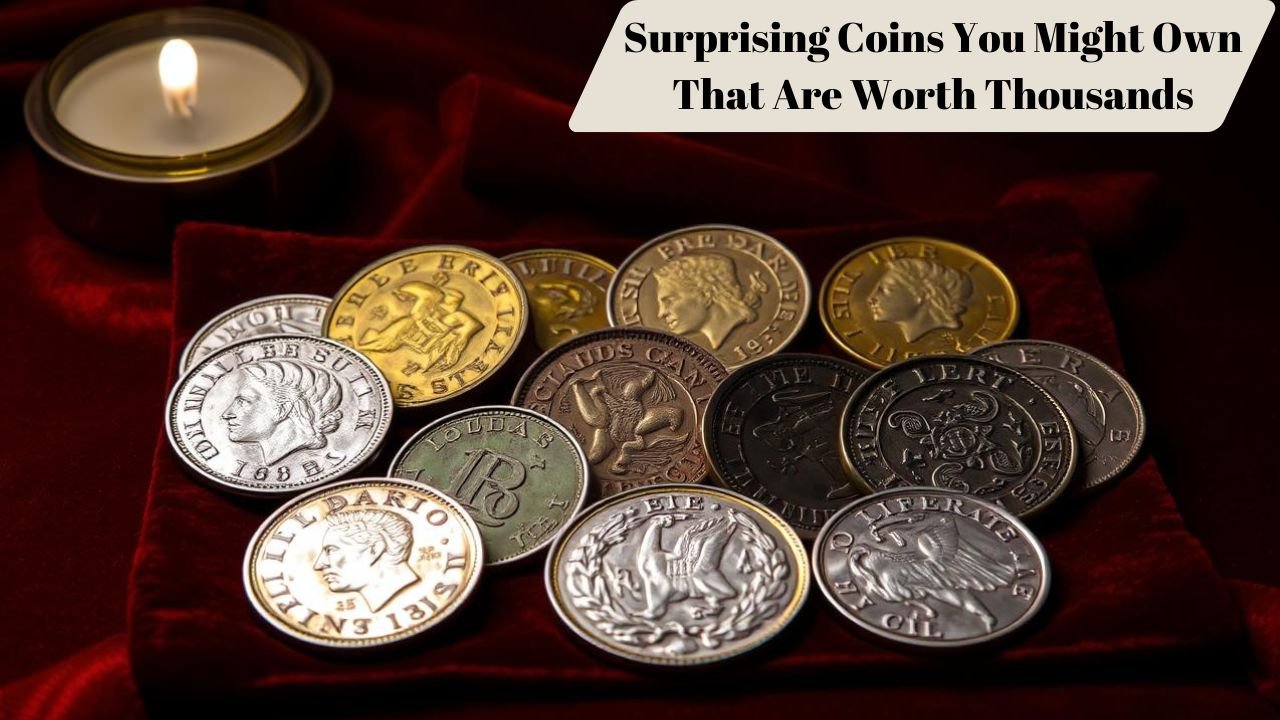Introduction
As a gold enthusiast, I’m always on the lookout for hidden treasures in my pocket change. You may be surprised to find valuable amounts in your daily collection. Even seemingly ordinary coins can be worth thousands to collectors.
There is a world of unexpected riches waiting to be discovered. The thrill of finding value for money is what keeps me looking. In your exchange, you would find real gold gems.
Key Takeaways
- A seemingly simple coin can be an impressive amount of money for collectors.
- There are mint errors, special dates, rare varieties and some valuable coins to discover.
- The value of the coin depends entirely on the condition of the coin.
- Doing research and automatically labeling your money can uncover hidden value.
- If you check your exchange rate regularly, you can find unexpected treasures.
Secret Treasures in Your Pocket Change: What to Seek

Believe it or not, your pocket change can be an incredibly valuable investment. From common mint flaws to special dates and rare varieties, there is a whole world of hidden gems waiting to be discovered. As a gold enthusiast, I am here to share my knowledge and help you discover potential treasures in your daily business.
Common Mint Errors That Make Coins Valuable
One of the most interesting things to look for in your pocket change is coins with mint flaws. These are mistakes made by the US. Mint eats into manufacturing and can significantly increase the value of the coin. Some common examples include off-center striking, double dies, and missing design elements. Watch out for these unique items – they can turn your easy cash into incredibly valuable treasures.
Key Dates and Rare Varieties
In addition to minting errors, some special dates and rare coin types can give your pocket change worth a second look. For example, a Lincoln penny from the 1940s and 1950s is highly sought after by collectors. Similarly, Roosevelt dimes and Washington Quarters of different designs can be worth far more than their face value. Know the dates and variety needed to increase your chances of finding hidden gems.
Condition Matters: Understanding Coin Grading
Positioning is everything when assessing the potential return on your money. Coins are sold from poverty (P-1) to mint condition (MS-70), with higher grades commanding significant price appreciation. Spend the time to really look at your money and read up on it educationally. This knowledge will help you accurately assess the value of your findings and ensure that you get the best value for every coin of value you find.
With these tips in mind, you’ll be well on your way to finding amazing value for money in your pocket variable. Happy hunting!
5 Amazing Coins You Might Possess and May Be Worth a Lot

Are you a hoarder or just someone with a little money at home? Your treasure may go unnoticed. Some common coins can be very valuable to collectors. Let’s take a look at five amazing coins you can earn that could be incredibly valuable.
- Lincoln Penny, 1955 Double Die Obverse: This uncommon penny features a double date and image. High-end examples can sell for more than $1,000.
- 1982 No-Mint-Mark Dime: Due to a minting error, some 1982 dimes had no mint mark. It could cost hundreds.
- 1937-D 3-legged buffalo nickel: This nickel is unique in that one of the bison’s legs is missing. The unreleased ones can sell in the thousands.
- 2000-P Sacagawea Dollar with Cheerios Reverse: Some of these dollars were accidentally placed in boxes of Cheerios. They can cost hundreds or thousands.
1943 Copper Penny: During World War II, pennies were made of metal, but some were mistakenly made of copper. These can cost thousands of dollars.
These coins are just a few examples of your rare and valuable coins. Always good to check your scarce coin collection or pocket change. Dollars that add up to thousands.
Conclusion
The world of fundraising is full of surprises. You can find hidden treasures and rare coins just by paying close attention to your change. Whether you’re an experienced fundraiser or just starting out, learning about investing is key.
Knowing what makes a coin valuable can help you figure it out. Look for special dates and understand how the position affects the price. This knowledge will help you find rare and valuable coins.
The next time you are looking for money, look for what could be more valuable. With a little effort and focus, you will find valuable gems. It can change how you view your new change.
FAQ’s
What are the most common coinage errors that can devalue coins?
Coins might lose value due to investment mistakes like off-center striking and duplicate dimmers. Collectors appreciate these since they are mint.
How do I know if my stock is worth more than its face value?
Look for rare dates and low mints. Check the currency’s condition and history. Use a reputable grading service to determine its value.
Why does a currency’s position impact its value?
The position of the money is important. Money is more valuable in higher grades. Employee productivity standards help determine this.
What is the surprise value of my collection or pocket change?
Coins like the 1943 copper Lincoln cent and the 1955 Lincoln double cent are worth thousands. Also valuable are a 1964-D Washington quarter, a 1969-S Lincoln penny, and a 1982 no-mint-mark dime. Always check your money for hidden gems.
How can I get my money professionally valued and awarded?
Use PCGS and NGC services for professional grading. This may help add value to your coin on the collector’s market.

